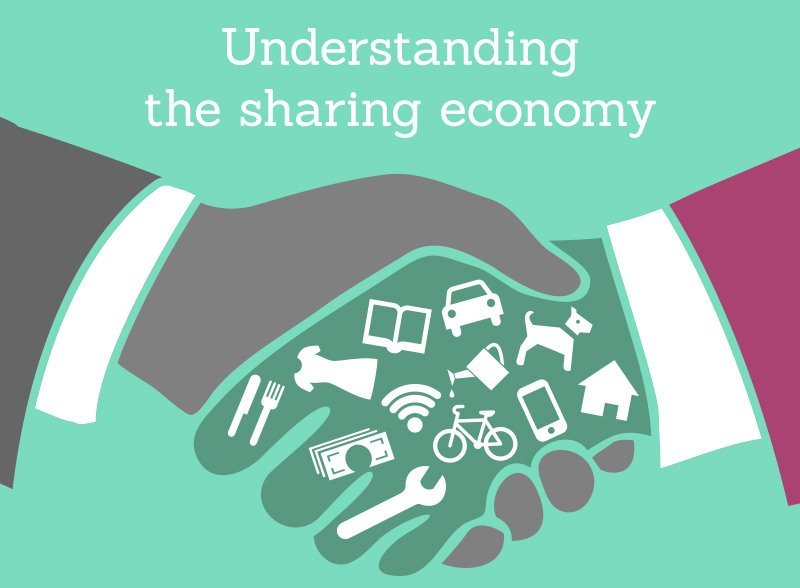List
Story > NEWS > Detail
[Resources] Innovation in the Shared Economy
In the context of a shared economy, what constitutes a divinity is whether it is a change to a better state and whether there is technology and social improvement. It depends on whether there is a better change, a contribution to the public interest goal of solving social problems, or simply a new product, a service that meets commercial goals. Technology improvement depends on whether or not technology development exists, and social improvement is recognized when the benefits to society of products or services are worth four times more than the personal value or the value added to society is greater than the benefits of the enterprise.

The idea of sharing vehicles and accommodations in a shared economy service is actually something that has been around since human history, so it's not particularly innovative, but it's technology that has created an online Internet platform that connects users by the simple means of smartphones. Wide-area high-speed wireless Internet network technology used in the shared economy, smartphone manufacturing S/W or application technology, social network service technology, GPS technology that collects and provides location information, and Payment technology are new ICT technologies. A shared economy company has transformed itself into a kind of platform operator, which can be said to have revolutionized the platform within Google and Apple. Now people can use smartphones connected to the Internet to address their demand for vehicles, accommodation, and other services across borders in real time and through exchange of letters and payments at the same time. Economically, the innovation of a shared economy is a dramatic reduction in transaction costs.

In order to create an efficient market, transaction costs need to be low, but mobile devices and applications that connect P2P transactions such as wireless Internet and smartphone made it possible to easily find anonymous parties, and use later information based on the activation of SNS to detect whether an anonymous counterparty is a reliable entity, thereby lowering the search cost of the transaction. This has enabled the activation of P2P transactions through a shared economy to diversify services that meet the needs of individual consumers, thereby expanding the range of consumers' choices. From the service provider's perspective, it has been able to achieve a long-tail economy that increases the value of idle assets, prevents inefficiency in resources across the economy, and helps to meet individual demand in niche markets.
Longtail economics is the theory that 80 percent of the results are produced by 20 percent of the organization, and that a small majority of the results are worth more than 20 percent of the core. When you put the goods sold by a company on the horizontal axis in the order that they're sold, and you mark them on the vertical axis and connect them by line, the lines that connect the best-selling products are sloping and short, but the lines that connect the low-selling products are as low but long as the long tail of the dinosaurs, and the total volume of the products that correspond to those tail parts overwhelms the total sales of the popular products. This is due to the development of the Internet, and online bookstores are free from space, including introducing books that aren't even on the shelves. As a result, consumers can easily find the product information they want through their search
This means that products that were previously ignored and not even given a chance to be seen by consumers due to cost-effectiveness will overwhelm popular products as a whole. Despite these innovations and advantages, it is true that there is still controversy over whether shared economic services will lead to social improvement. Social improvement may be more controversial because it can be assessed differently by region and class, but negative economic effects include possible illegalities, unfair labor practices to the provider, reduction of traditional corporate roles, government taxation rights, issues of public safety, reduction of legal responsibility in the event of danger, and reduction of production by consumers.

However, in the case of a shared economy, there is a difference in the pros and cons of a non-profit platform, more negative than those seeking to maximize profits and assets, and investment in the scale of venture capital firms is fueling this tendency. After all, the shared economy provides consumers with better services based on a sense of homogeneity as a community member at a lower price, and from a provider's point of view, it not only allows them to earn income using idle resources, but also increases their chances of welfare by enabling flexible working hours.
On the other hand, shared-economy companies, especially profit-seeking platforms, may be using innovative technologies, but they are almost always ICT platforms that remain unchanged in traditional capitalist companies and attributes. It is also true that these shared-economy companies are creating conflicts and competition for the same market as traditional businesses, as well as problems caused by consumer safety and the unfair use of labor. The bottom line is that the shared economy is technically and economically innovative, but since there is still controversy over whether it constitutes a social improvement, it seems difficult to give a definite answer to the innovation of the shared economy as a whole.
In the context of a shared economy, what constitutes a divinity is whether it is a change to a better state and whether there is technology and social improvement. It depends on whether there is a better change, a contribution to the public interest goal of solving social problems, or simply a new product, a service that meets commercial goals. Technology improvement depends on whether or not technology development exists, and social improvement is recognized when the benefits to society of products or services are worth four times more than the personal value or the value added to society is greater than the benefits of the enterprise.

The idea of sharing vehicles and accommodations in a shared economy service is actually something that has been around since human history, so it's not particularly innovative, but it's technology that has created an online Internet platform that connects users by the simple means of smartphones. Wide-area high-speed wireless Internet network technology used in the shared economy, smartphone manufacturing S/W or application technology, social network service technology, GPS technology that collects and provides location information, and Payment technology are new ICT technologies. A shared economy company has transformed itself into a kind of platform operator, which can be said to have revolutionized the platform within Google and Apple. Now people can use smartphones connected to the Internet to address their demand for vehicles, accommodation, and other services across borders in real time and through exchange of letters and payments at the same time. Economically, the innovation of a shared economy is a dramatic reduction in transaction costs.

In order to create an efficient market, transaction costs need to be low, but mobile devices and applications that connect P2P transactions such as wireless Internet and smartphone made it possible to easily find anonymous parties, and use later information based on the activation of SNS to detect whether an anonymous counterparty is a reliable entity, thereby lowering the search cost of the transaction. This has enabled the activation of P2P transactions through a shared economy to diversify services that meet the needs of individual consumers, thereby expanding the range of consumers' choices. From the service provider's perspective, it has been able to achieve a long-tail economy that increases the value of idle assets, prevents inefficiency in resources across the economy, and helps to meet individual demand in niche markets.
Longtail economics is the theory that 80 percent of the results are produced by 20 percent of the organization, and that a small majority of the results are worth more than 20 percent of the core. When you put the goods sold by a company on the horizontal axis in the order that they're sold, and you mark them on the vertical axis and connect them by line, the lines that connect the best-selling products are sloping and short, but the lines that connect the low-selling products are as low but long as the long tail of the dinosaurs, and the total volume of the products that correspond to those tail parts overwhelms the total sales of the popular products. This is due to the development of the Internet, and online bookstores are free from space, including introducing books that aren't even on the shelves. As a result, consumers can easily find the product information they want through their search
This means that products that were previously ignored and not even given a chance to be seen by consumers due to cost-effectiveness will overwhelm popular products as a whole. Despite these innovations and advantages, it is true that there is still controversy over whether shared economic services will lead to social improvement. Social improvement may be more controversial because it can be assessed differently by region and class, but negative economic effects include possible illegalities, unfair labor practices to the provider, reduction of traditional corporate roles, government taxation rights, issues of public safety, reduction of legal responsibility in the event of danger, and reduction of production by consumers.

However, in the case of a shared economy, there is a difference in the pros and cons of a non-profit platform, more negative than those seeking to maximize profits and assets, and investment in the scale of venture capital firms is fueling this tendency. After all, the shared economy provides consumers with better services based on a sense of homogeneity as a community member at a lower price, and from a provider's point of view, it not only allows them to earn income using idle resources, but also increases their chances of welfare by enabling flexible working hours.
On the other hand, shared-economy companies, especially profit-seeking platforms, may be using innovative technologies, but they are almost always ICT platforms that remain unchanged in traditional capitalist companies and attributes. It is also true that these shared-economy companies are creating conflicts and competition for the same market as traditional businesses, as well as problems caused by consumer safety and the unfair use of labor. The bottom line is that the shared economy is technically and economically innovative, but since there is still controversy over whether it constitutes a social improvement, it seems difficult to give a definite answer to the innovation of the shared economy as a whole.



